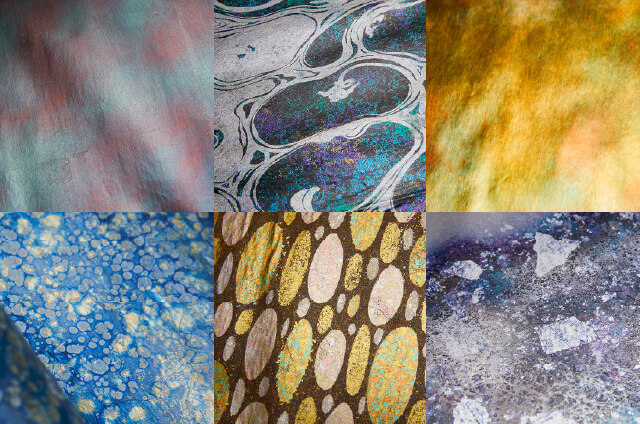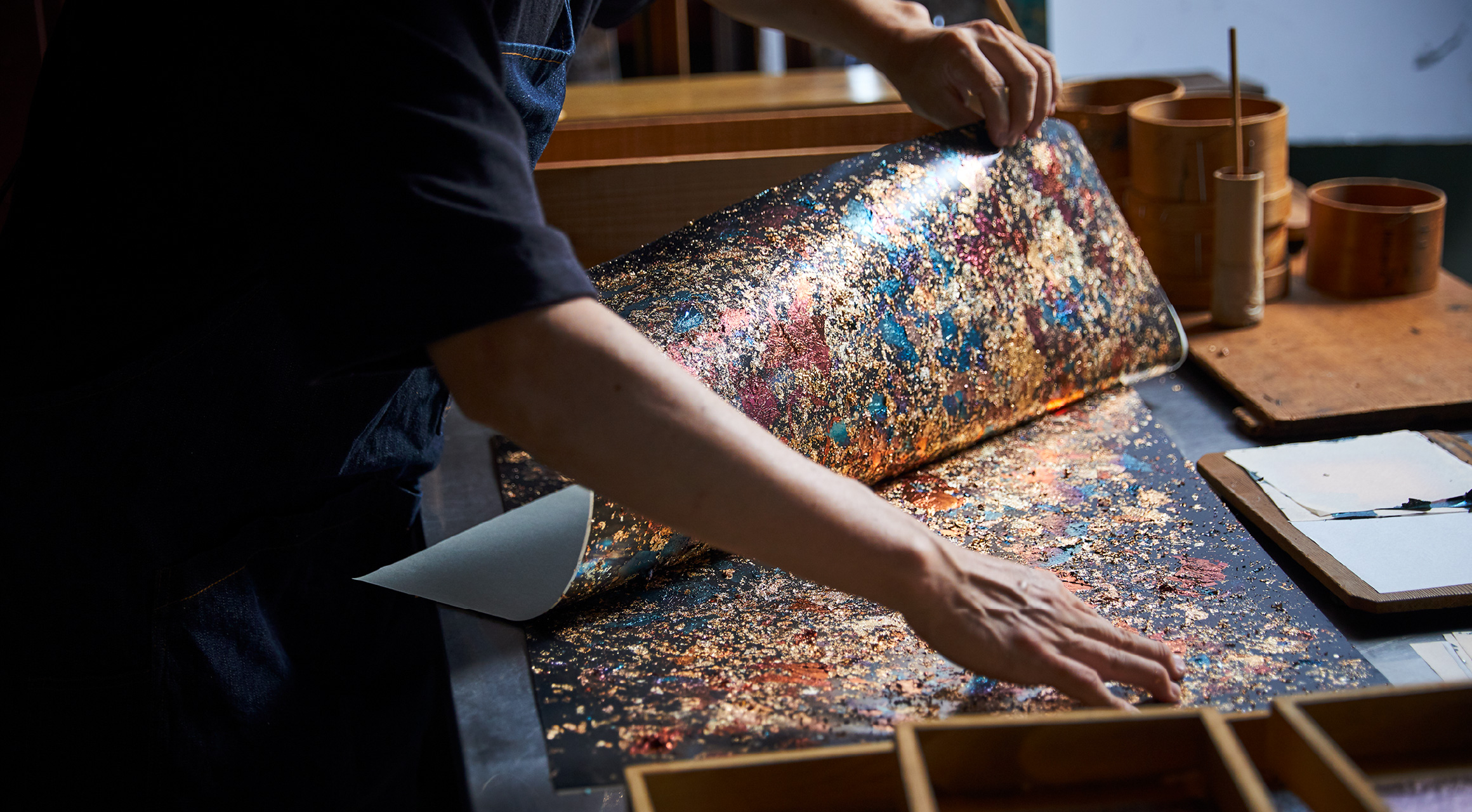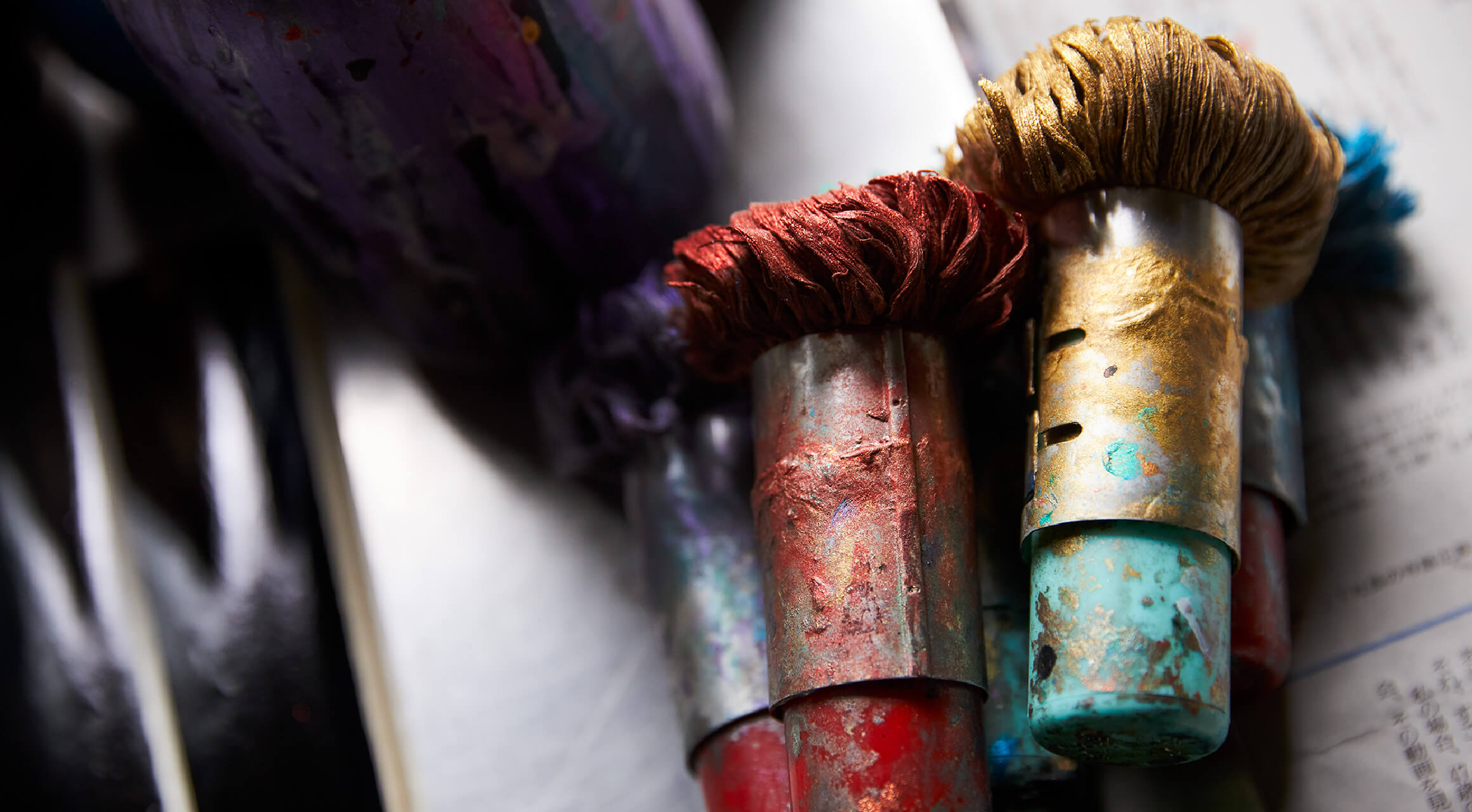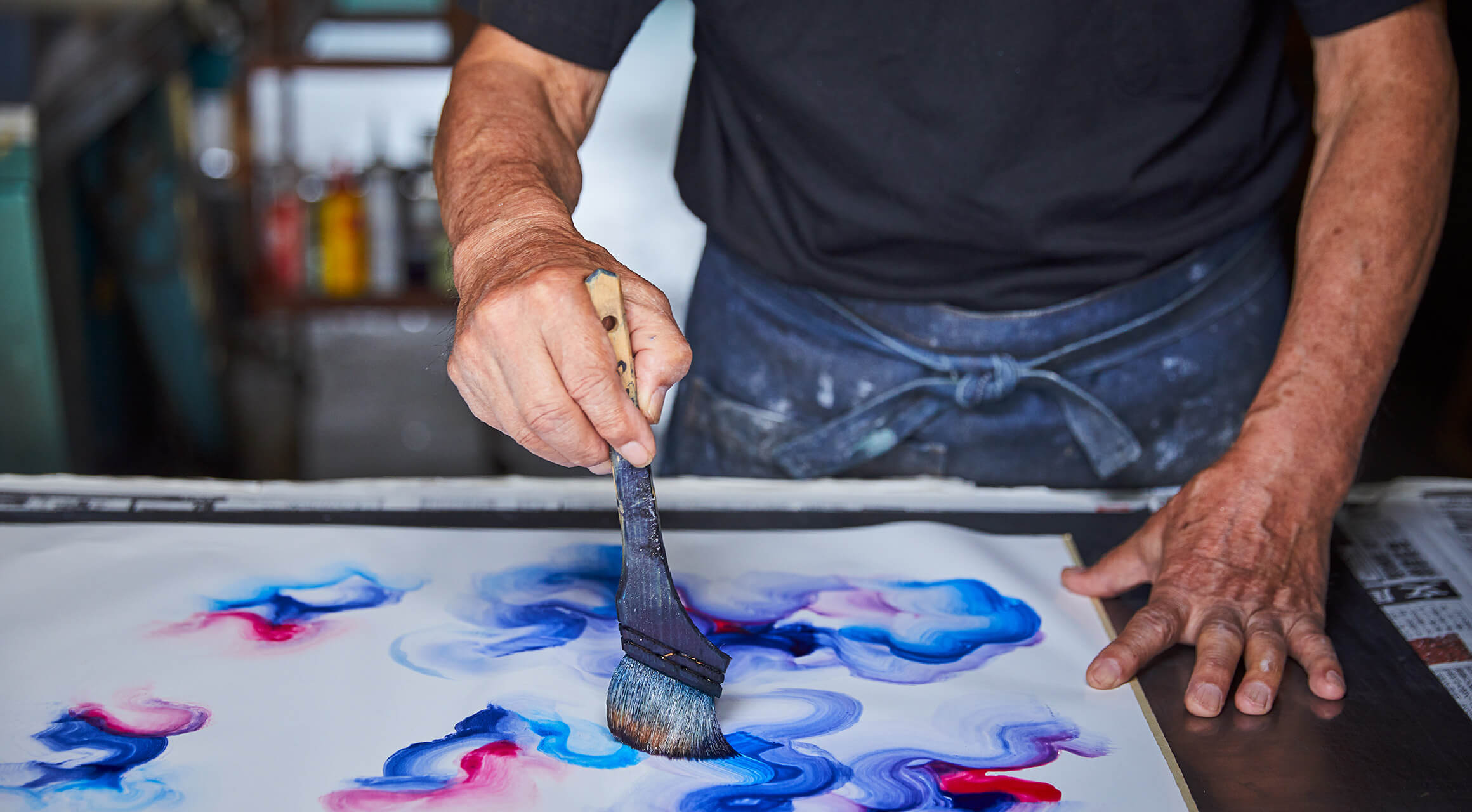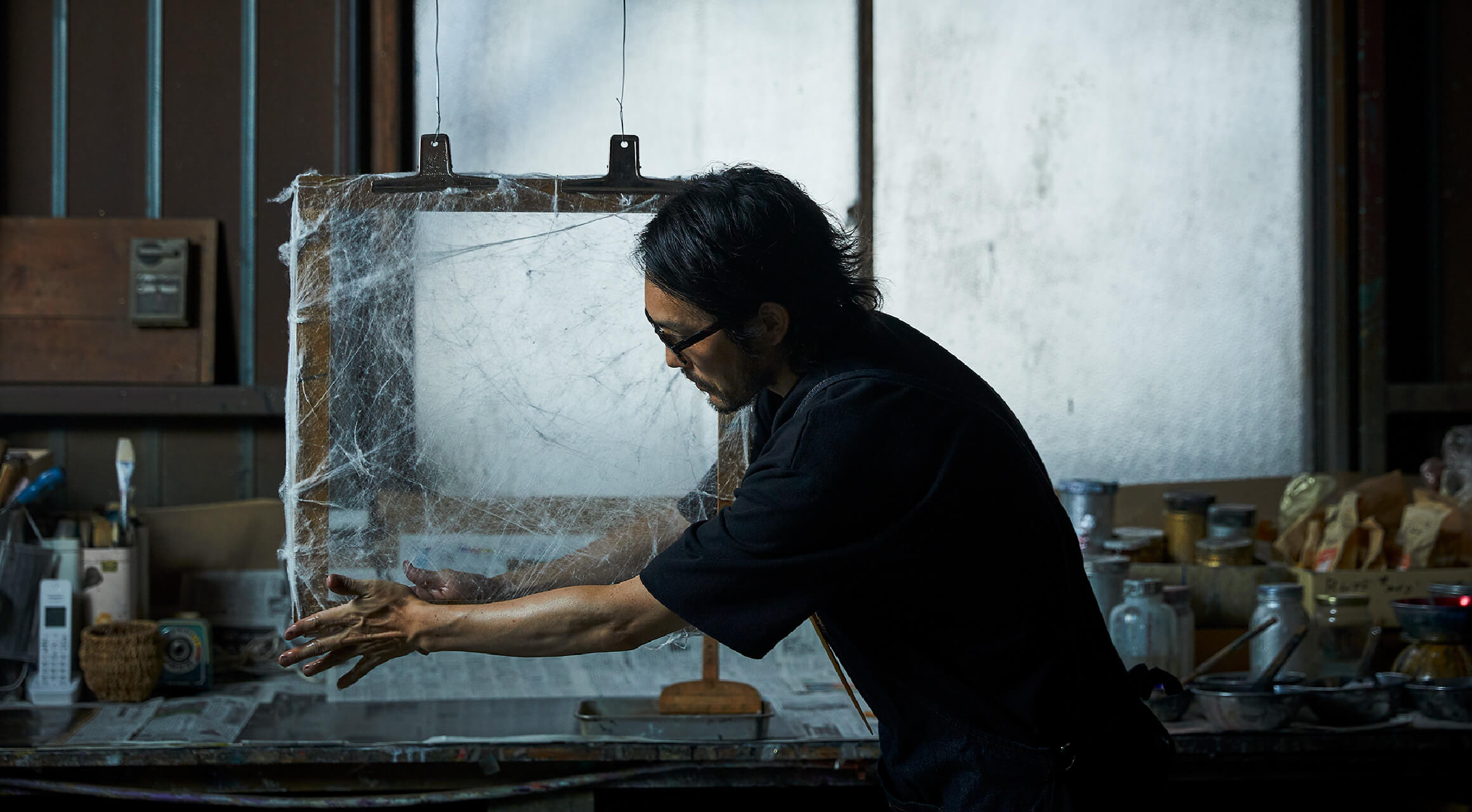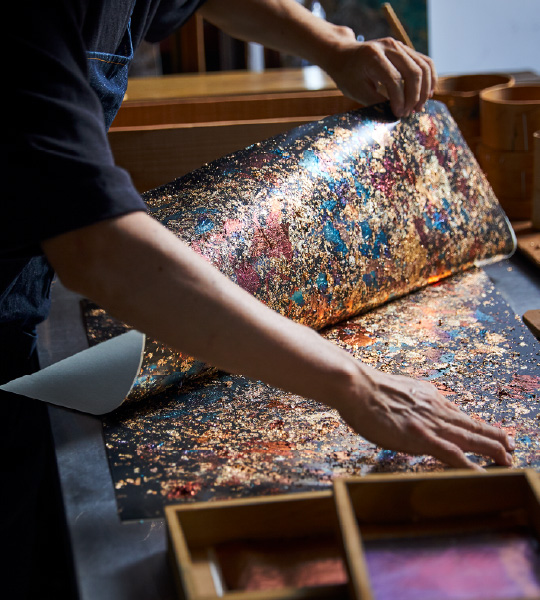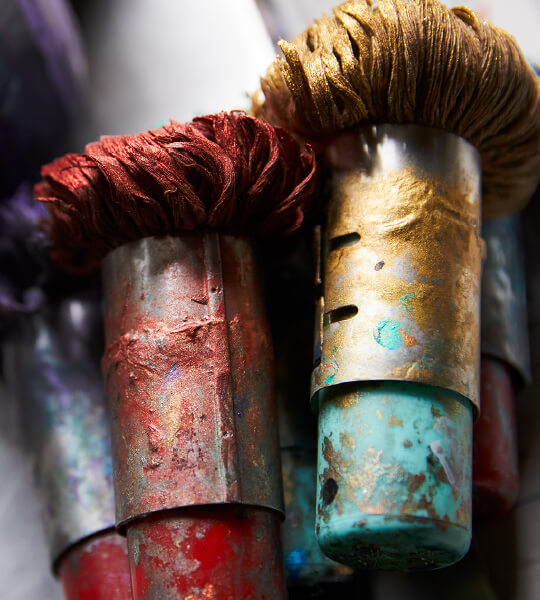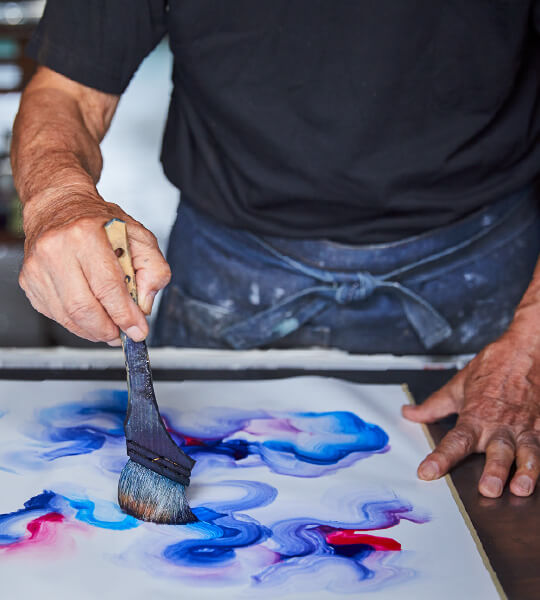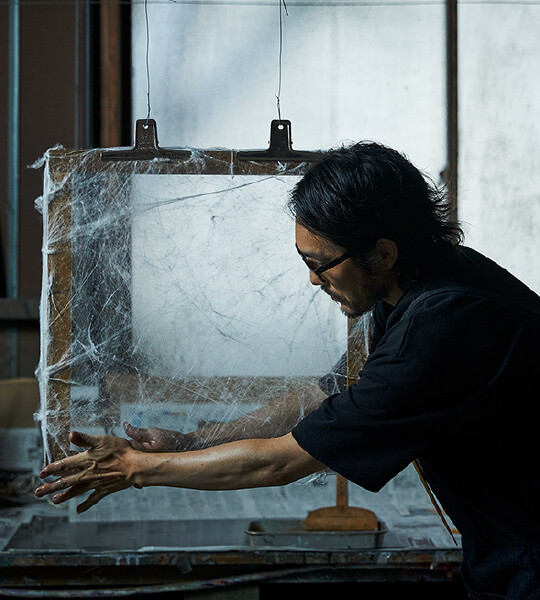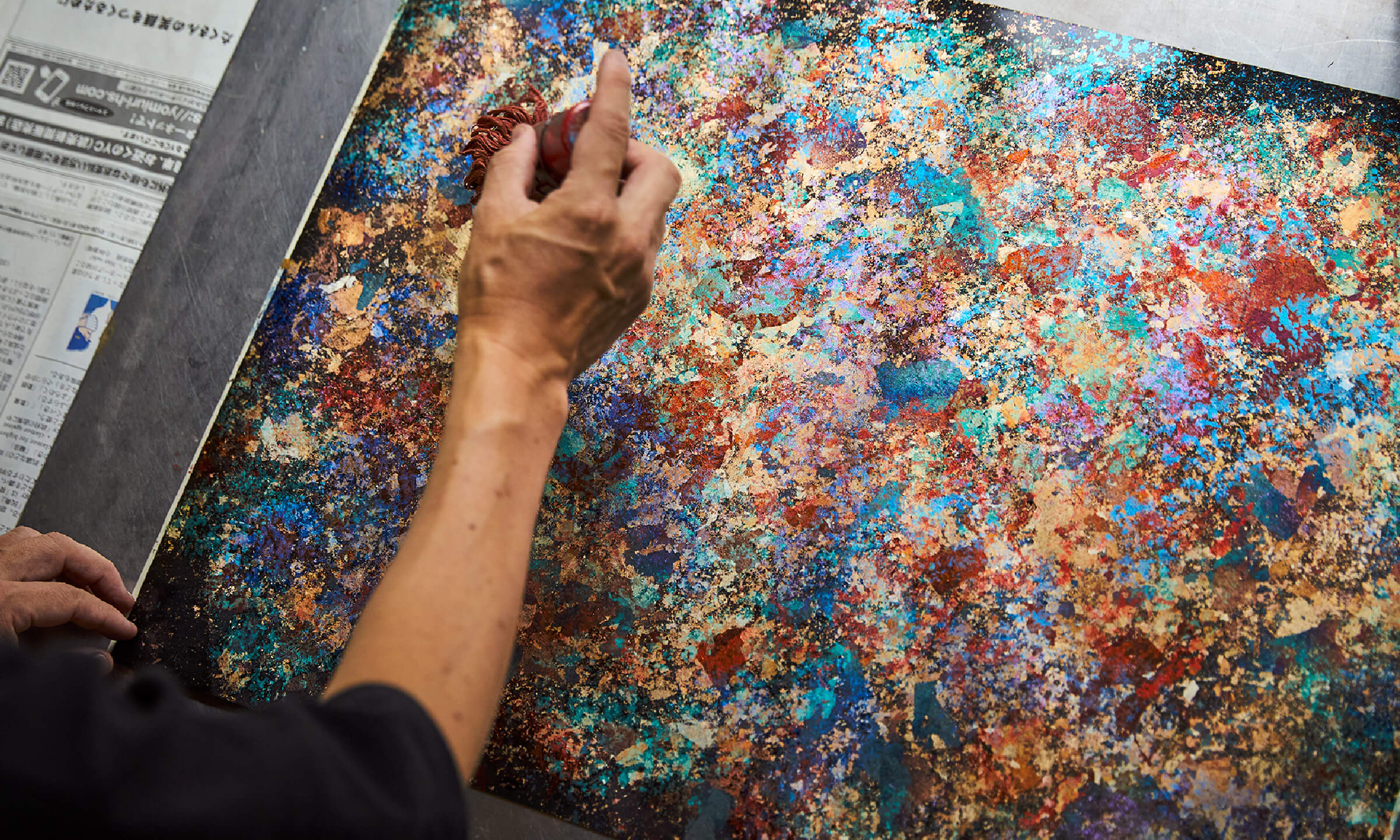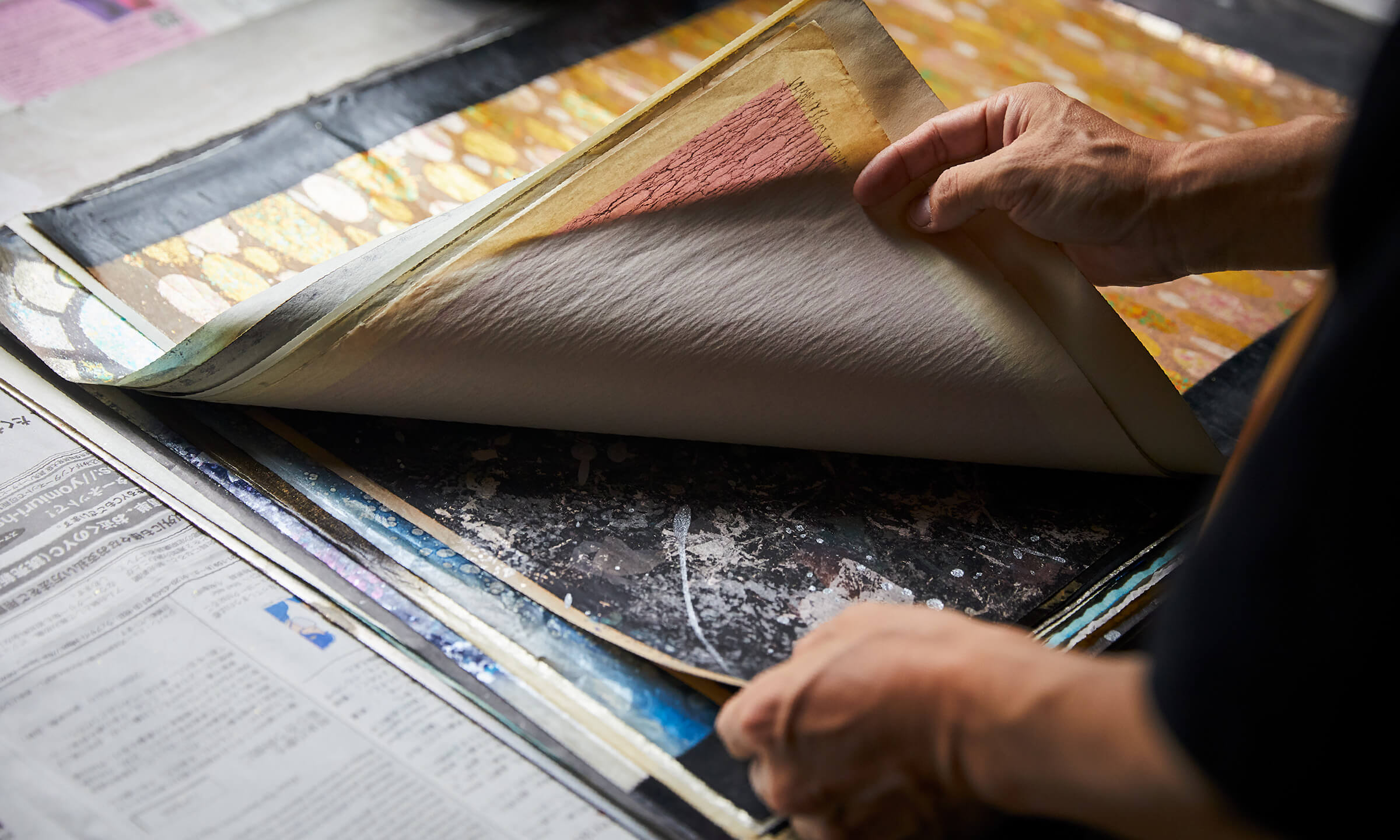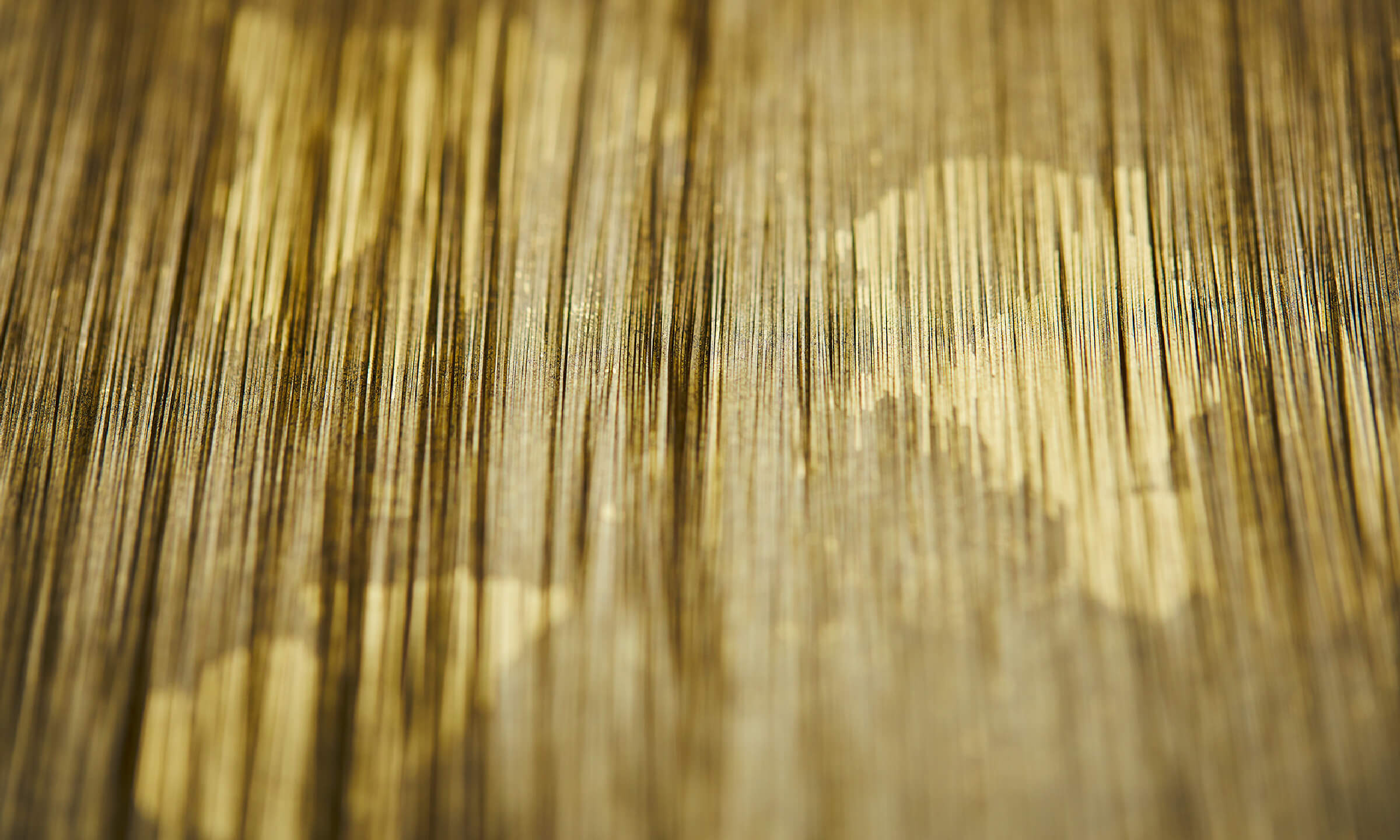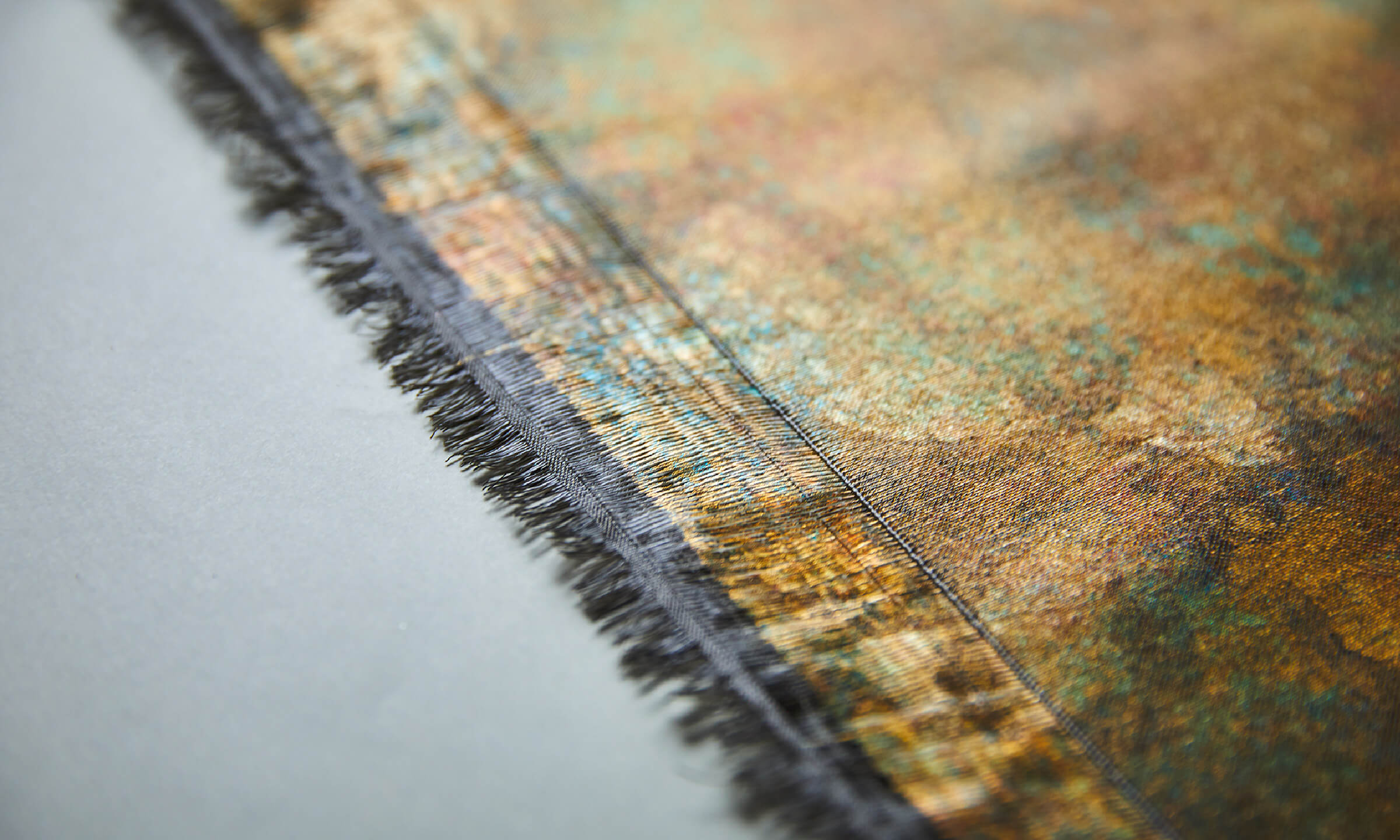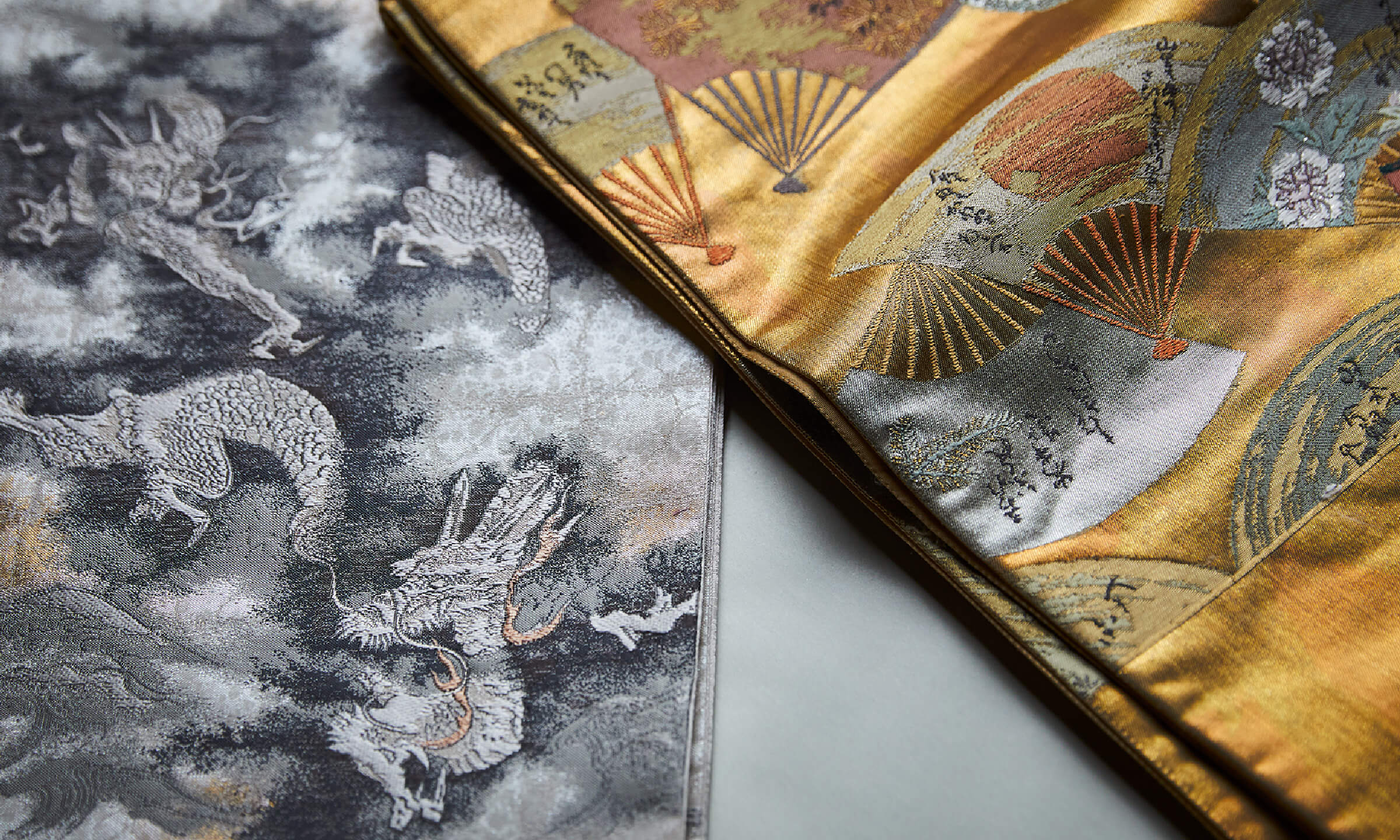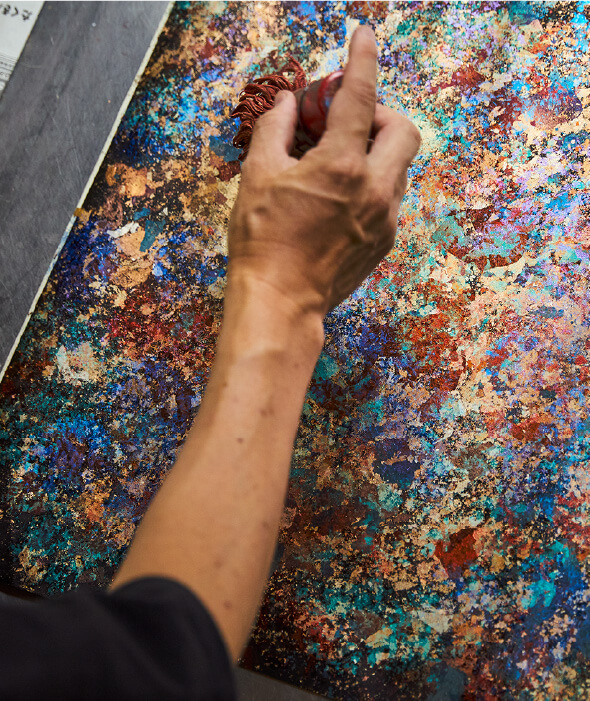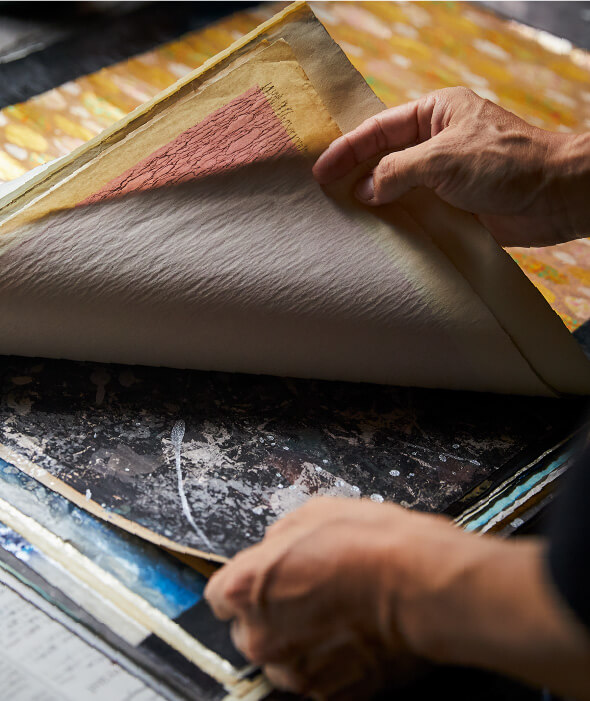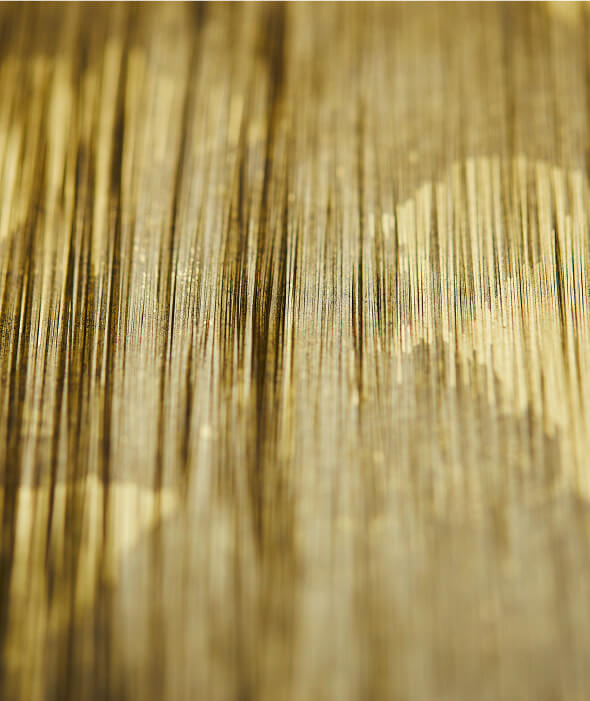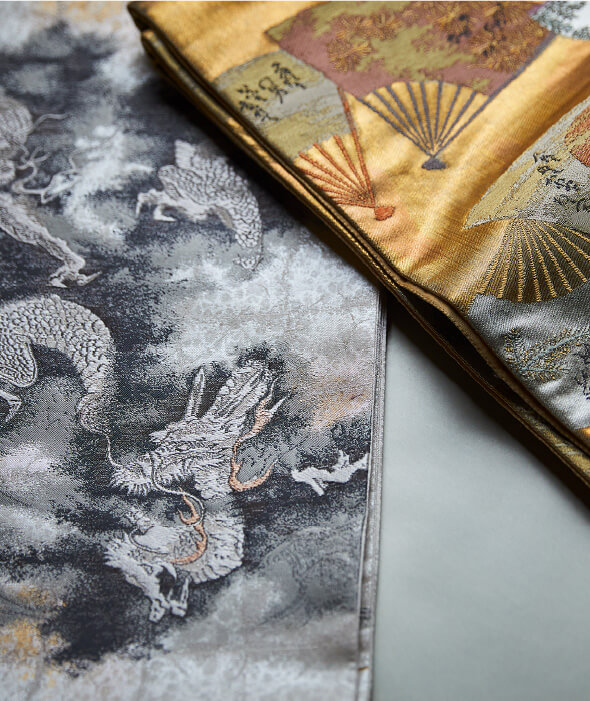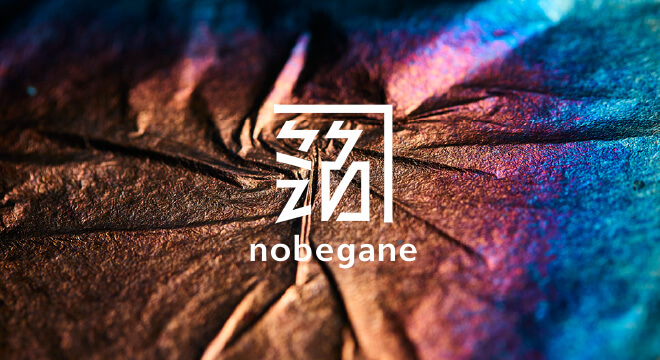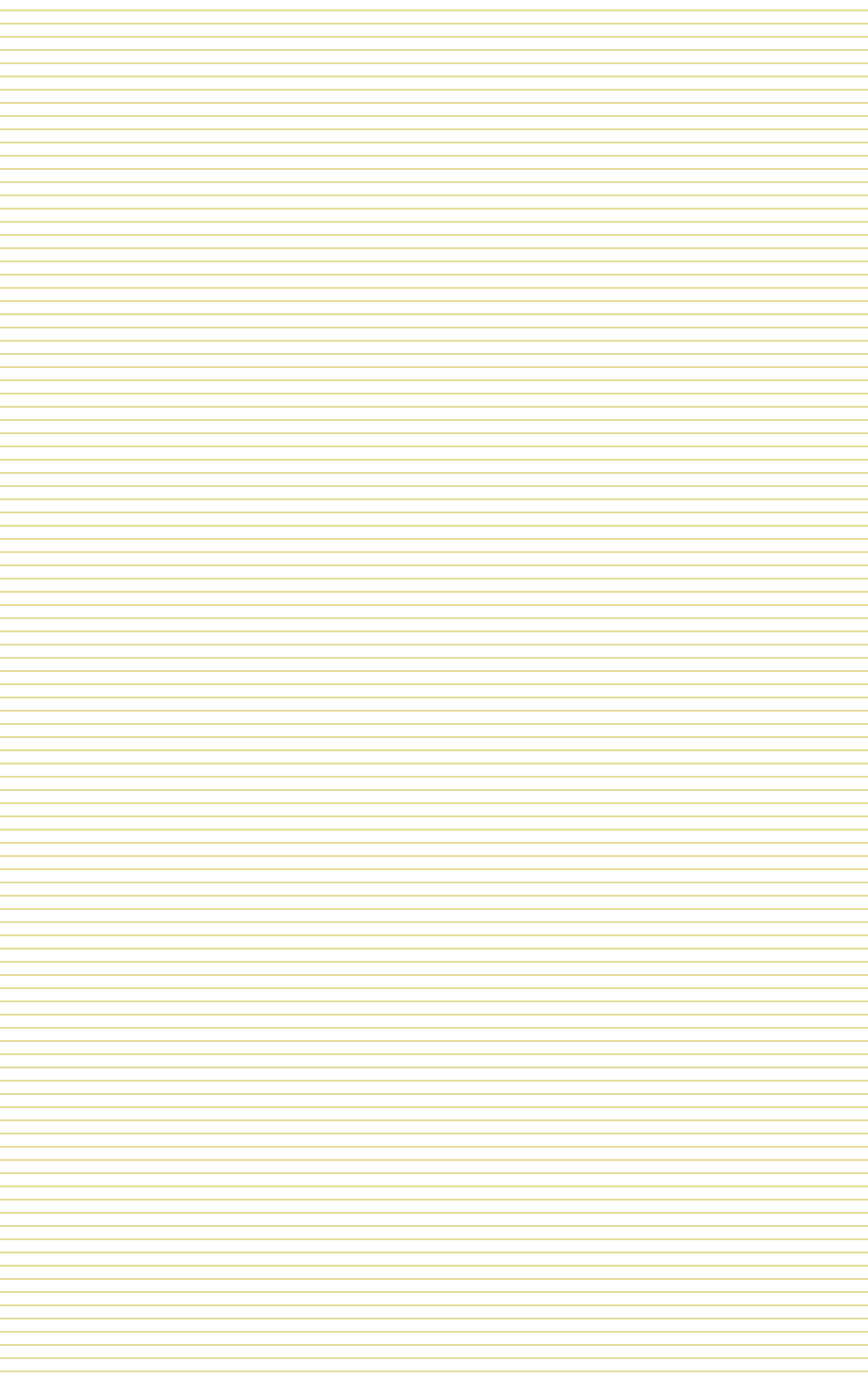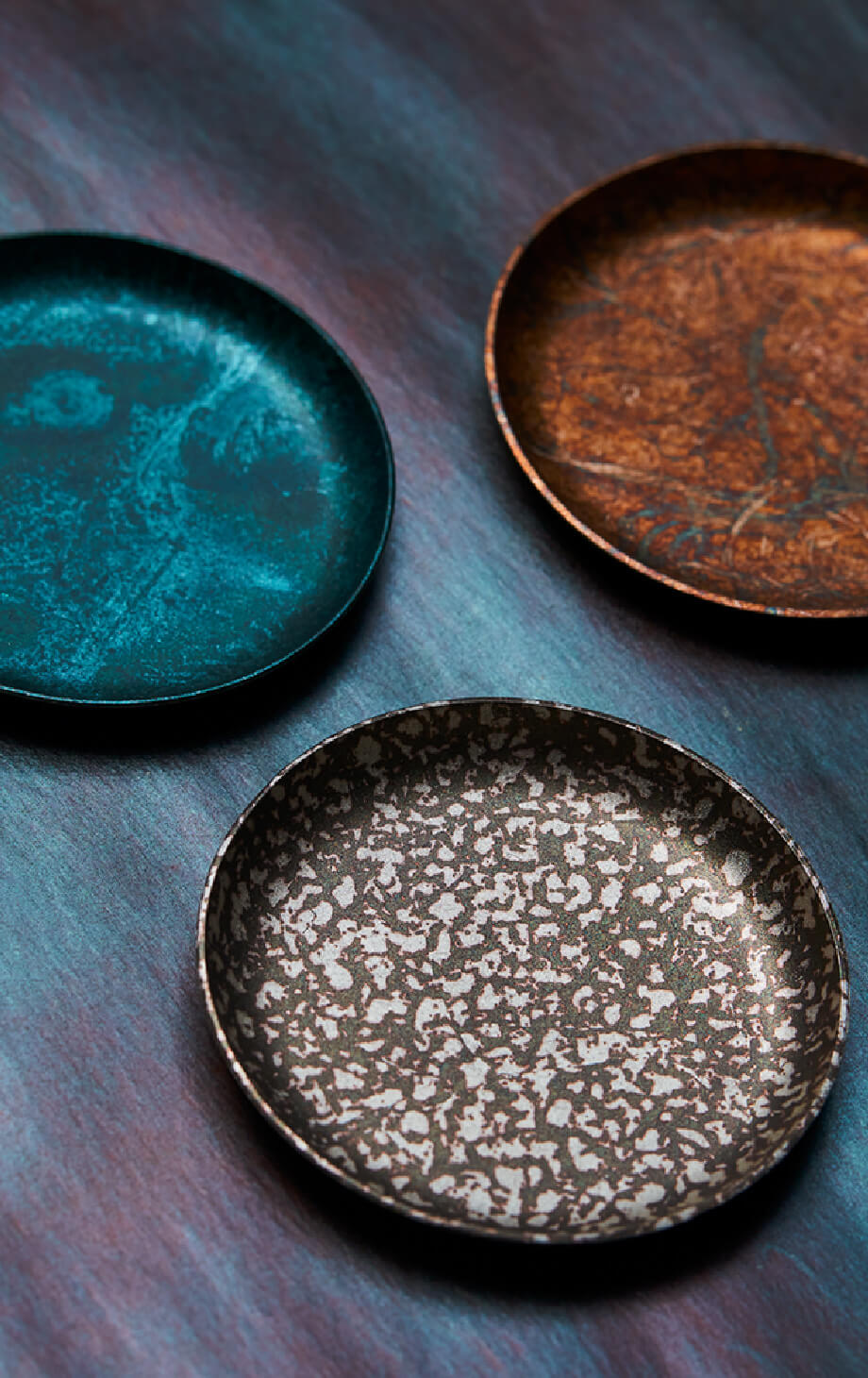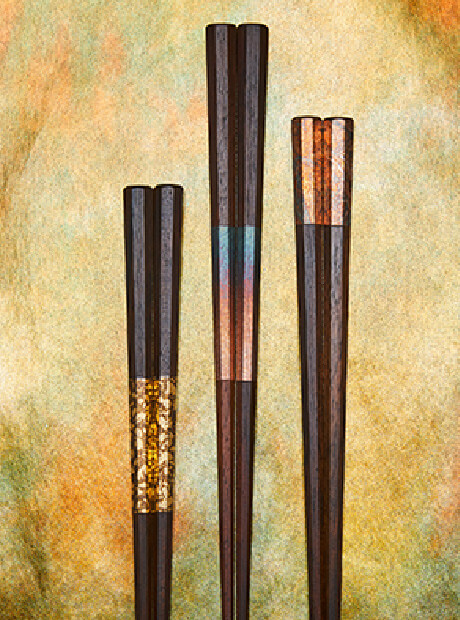
ABOUT
自由で柔軟な視点で
伝統工芸の新たな可能性を探る
楽芸工房は、京都・西陣で箔屋としての歴史を重ねてきた村田商店の直営工房・意匠部として平成元年に創業しました。長年、西陣織の特徴のひとつである引箔の製造を行ってきました。300年以上前に開発されたと言われているこの引箔による箔を織り込む技術を、楽芸工房は今もなお支え守り続けています。初代当主・村田輝義(2代目 善右衛門)は世界に誇る西陣織の芸術性と高度な技術を継承する一方、伝統工芸の枠を超えた新たなモノづくりにも積極的に取り組みました。アート、デザイン、インテリア、ファッションなど、幅広いジャンルと接点をつくりながら、国内外のマーケットに向けて革新的なデザインを提案してきました。
A free and flexible perspective.
Exploring New Possibilities for Traditional
Crafts
Rakgei Kobo was founded in 1989 as a direct-managed workshop and design department of
Murata Shoten, a foil shop with a long history in Nishijin, Kyoto. Over the years, we have been
manufacturing the traditional technique of "hikihaku", a speciality of Nishijin textile, and we
continue
to support and protect this technique of weaving foil, which is said to have been developed over 300
years ago.
The founder, Teruyoshi Murata (the second generation Zenemon), inherited the artistry
and
advanced techniques of Nishijin-ori, a world-renowned craft of which he was the proud owner, while
actively working to create new craftsmanship that transcended the boundaries of traditional craftwork.
While creating contacts with a wide range of genres such as art, design, interior design, and fashion,
he proposed innovative designs for the domestic and international market.
歴史を見つめ、
未来を創造する
西陣織には1200年以上の歴史があります。完成までに必要な20以上もの工程それぞれを一人の職人が担当するという高度な分業によって支えられてきました。楽芸工房は、西陣織の技術を未来に繋ぐだけでなく、その技術をもとに現代生活に即した作品を創造し、新しい伝統を築くことを目指しています。
西陣織をはじめとする伝統産業の多くは、伝統と革新の響き合いによって様々な進化を遂げてきました。伝統工芸を中心に据え、多様なアイデアを織り込み、さらに深化させて次に繋いできたのです。新しいものを取り込んでも決して壊れないのが伝統の強さです。素材や道具、デザインが変わっても、工芸の本質だけは変わらず継承していく、これが未来の伝統に繋がっていくのではないでしょうか。
Looking at history and creating the future
Nishijin-ori has a history of over 1200 years. It is supported by a sophisticated
division
of labor, with one artisan in charge of each of the more than 20 steps required for its completion.
Rakugei Kobo not only aims to pass on the skills of Nishijin weaving to the future, but also to create
works suited to modern life and to build a new tradition based on these skills.
Nishijin-ori and
many
other traditional industries have evolved in various ways due to the resonance of tradition and
innovation. Weaving in a variety of ideas with traditional crafts at the center, we have deepened them
and connected them to the next. The strength of tradition is that it never breaks down, even when new
things are introduced. Even if the materials, tools, and designs change, the essence of the craft is
still alive and well, and this is what will lead to the traditions of the future.
WORKS
引箔(平箔・柄箔・模様箔)とは
〜西陣織を支える名脇役〜
西陣織の帯地の特徴である絢爛豪華な金・銀の輝きは、引箔によって表現されています。引箔は古来より、西陣織の中でも最高級品に用いられてきた材料の一つです。そしてそれを織物に織り込むための西陣織独自の伝統技法もまた「引箔技法」と呼びます。
What is Hikihaku (foil seet, patterned foil )?
〜The supporting actors who
support Nishijin-ori
The lavish gold and silver shine of Nishijin-ori obi fabrics is expressed by the use of "hikihaku" (a traditional Japanese masking technique). hikihaku has been one of the most expensive materials used in Nishijinn weaving since ancient times. The traditional technique for weaving it into textiles is also called "hikihaku".
材料(素材)
material
伝統的な引箔は和紙の表面に接着剤として漆を塗り、金・銀箔を押し上げて(貼って)製作します。現在では金・銀箔だけでなく、様々な材料や道具を用いながら独自の模様を表現するのが主流です。これを専門の裁断所で一定の方向に髪の毛ほどの細さに裁断します。
Traditional "hikihaku" is made by applying lacquer as an adhesive to the surface of washi paper, and then pressing (or affixing) gold or silver foil to it. Nowadays, it is mainstream to express unique patterns using not only gold and silver leaf but also various materials and tools. These patterns are cut into hair-thin strips in certain directions at a specialized cutting room.
技法
technique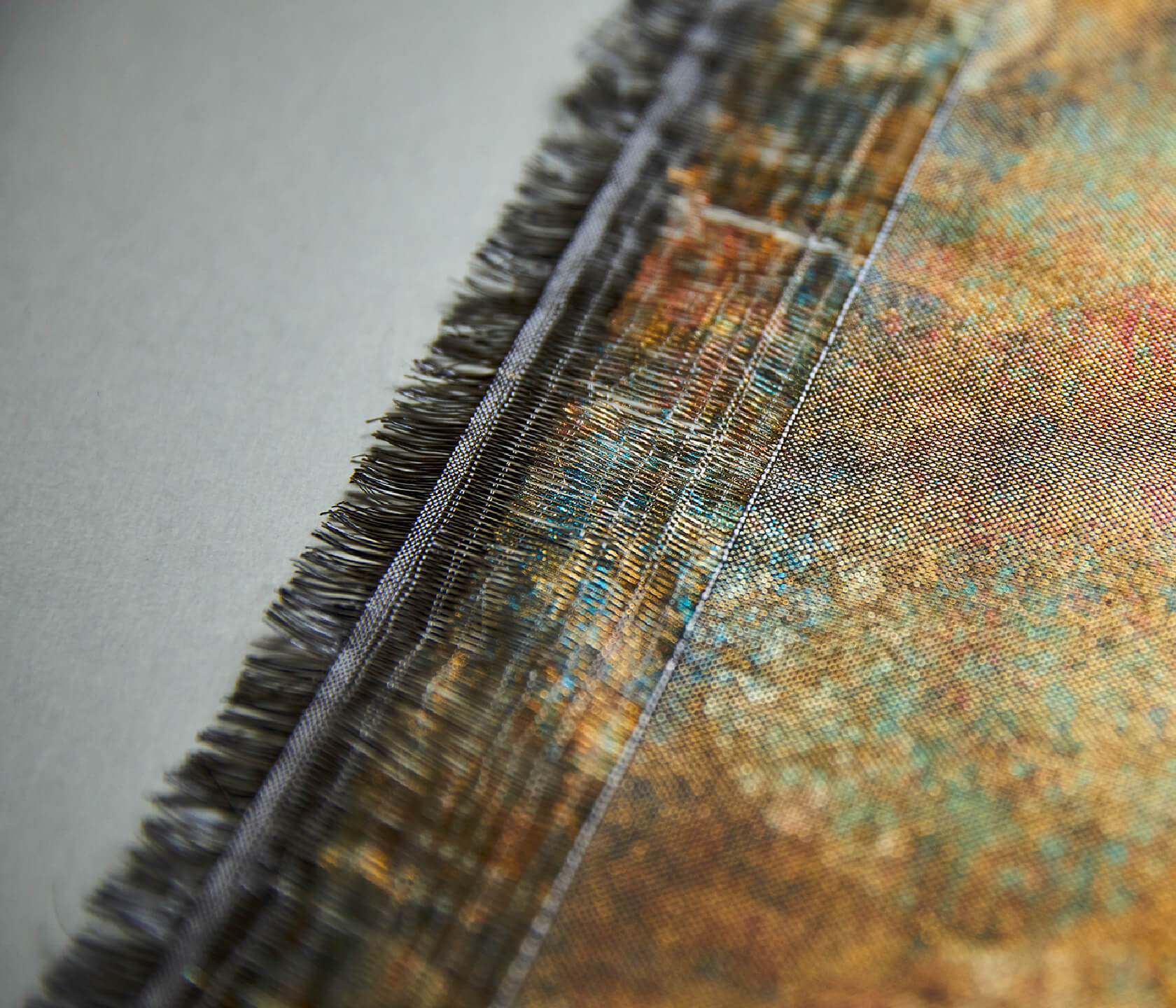
織物は経糸(たていと)に緯糸(よこいと)を通して織り上げます。西陣織の特徴は、緯糸の代わりに裁断した引箔を織り込む「引箔技法」にあります。一本ずつ順番通りに織り込むことで、元の和紙に描いた模様が帯に再現されます。引箔は糸と違い表裏があるので、織り手が一本ずつヘラに引っ掛け、引っ張ることにより経糸の間を通します。この動作から引箔という名が生まれました。
Weaving is done by passing a weft yarn through a warp yarn (warp threads) and a weft yarn (yokoito). Nishijin brocade is characterized by the "hikihaku" technique, in which cut pieces of foil are woven in place of the weft. By weaving each strand in sequence, the pattern drawn on the original Japanese paper is reproduced on the obi. Unlike yarn, Hifil has a front and back side, so the weaver hooks each strand on a spatula and pulls it through the warp threads by pulling. This action gives rise to the name "hikihaku".

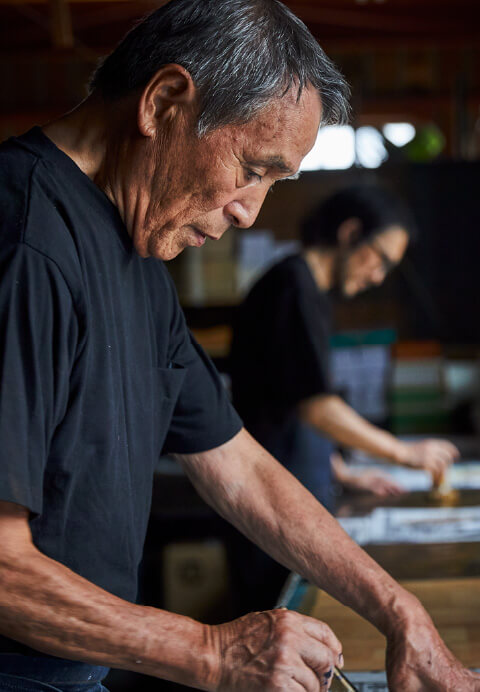
Teruyoshi MURATA
村田輝義

Kohei MURATA
村田紘平
COMPANY
- 会社名
- 有限会社 楽芸工房
- 代表取締役
- 村田 輝義
- TEL・FAX
- 077-534-5024
- rakugei@sky.plala.or.jp
- 所在地
- 〒520-0861
滋賀県大津市石山寺三丁目14番1号
- Name
- RAKUGEIKOBO,inc.
- CEO
- Teruyoshi MURATA
- TEL・FAX
- +81-77-534-5024
- rakugei@sky.plala.or.jp
- Address
- 〒520-3-14-1, Ishiyamadera, Otsu Shi, Shiga Ken,
520-0861, Japan
CONTACT
下記フォームより必要事項を記入いただきSendボタンを押してください。
Please fill in the necessary information on the form and press the send button.
